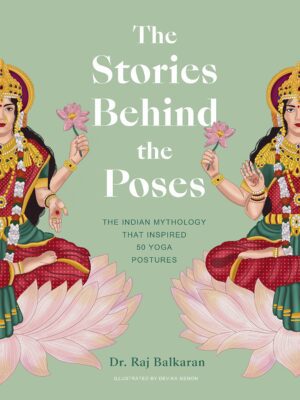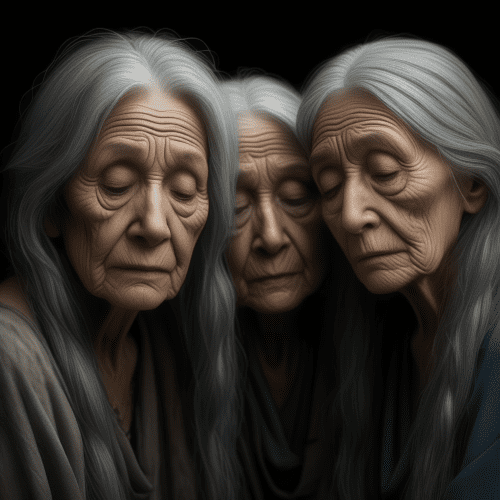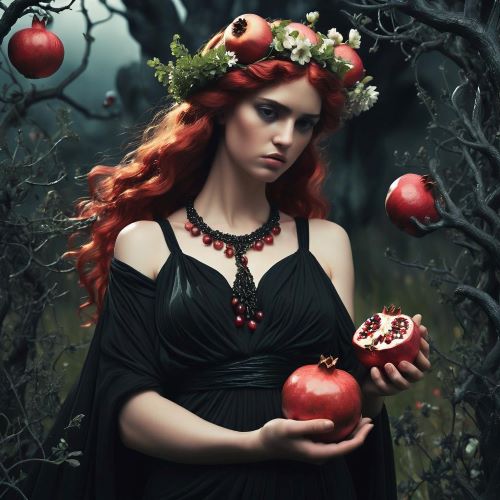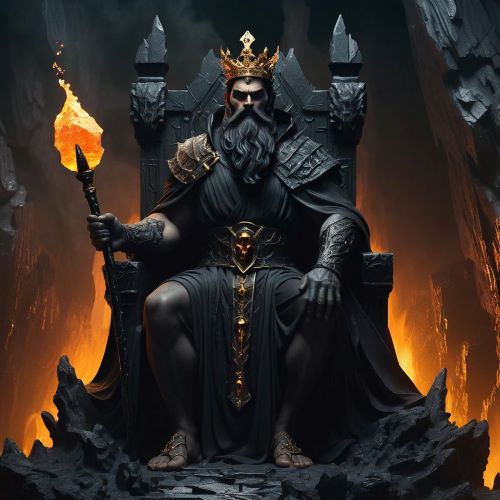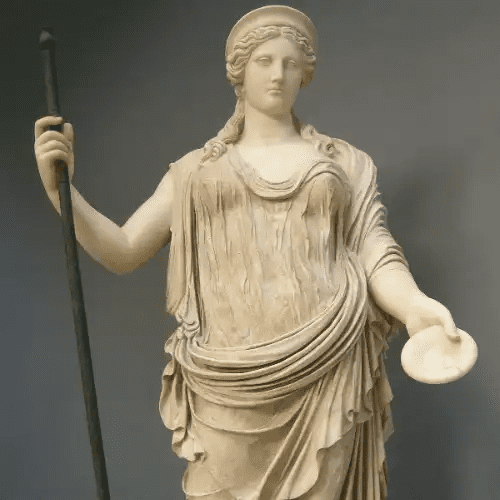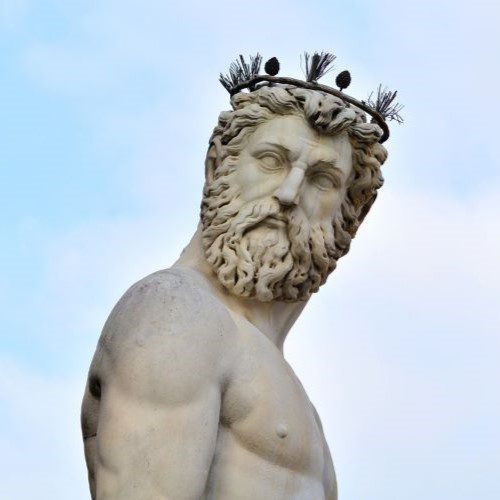Demeter : Goddess of Agriculture
Listen
At a glance
Demeter
Introduction
In the pantheon of Greek deities, each god or goddess embodies unique facets of human life and the natural world. Among them stands Demeter, revered as the goddess of agriculture, fertility, and the harvest. Known for her nurturing essence and maternal instincts, Demeter’s influence transcends the boundaries of myth, leaving an enduring impact on both ancient and contemporary cultures. In Greek mythology, Demeter presides over the abundance of the earth, governing the growth of crops and the fertility of the soil. Her epithets include Sito, signifying her role as the bestower of grain and sustenance, and Thesmophoros, symbolizing the orderly governance of agrarian society. Demeter’s significance in Greek mythology is profound, her narrative intertwining themes of fertility, sorrow, and the perpetual cycle of life and death. From nurturing the earth’s bounty to enduring the anguish of her abducted daughter, Persephone, Demeter’s myth echoes the universal human experiences of love, loss, and the enduring resilience of hope.
Physical Traits
Demeter, often depicted as a mature woman, exudes regal dignity with her flowing robes and crown adorned with sheaves of wheat or wildflowers. This imagery is mirrored in her Roman counterpart, Ceres. The torch she carries symbolizes the guiding light for initiates journeying to the underworld, while the wheat embodies the fertility and agricultural abundance she bestows upon the earth. Her portrayal in Greek art accentuates her mature stature, often crowned with wreaths of wheat or barley, signifying her role as the provider of sustenance. Whether depicted carrying sheaves of wheat or a cornucopia overflowing with fruits and grains, Demeter’s maternal presence emanates warmth and strength, a testament to her nurturing essence as the earth mother.
Family
Demeter’s lineage intertwines her with the core of the Olympian pantheon, as the offspring of the Titans Rhea and Cronus. She shares this prestigious heritage with siblings Zeus, Poseidon, Hades, Hera, and Hestia. Central to Demeter’s familial connections is her daughter, Persephone, whose abduction by Hades lies at the heart of Demeter’s myth and the Eleusinian Mysteries, a revered cult practice in ancient Greece. Additionally, through her union with Zeus, Demeter gave birth to Plutus, the god of wealth. This complex web of relationships underscores Demeter’s pivotal role within the divine lineage, shaping not only her own narrative but also the broader tapestry of Greek mythology.
Other names
Demeter is recognized by various epithets, each shedding light on different facets of her divine persona. Among these are Sito, Thesmophoros, Chloe, and Anesidora. For instance, Anesidora, translating to “sender of gifts,” underscores her role as a benevolent provider. Furthermore, Demeter’s very name holds significant meaning, stemming from “dē (earth)” and “mētēr (mother),” portraying her as the nurturing Earth Mother who sustains all life. Another epithet, “Deo,” simply meaning “goddess,” emphasizes her central position within the pantheon and her association with the earth’s abundance. These multifaceted titles illuminate the diverse dimensions of Demeter’s influence and significance across ancient mythology.
Powers and Abilities
Demeter’s dominion as the goddess of agriculture and fertility extends her influence across the natural world, commanding the cycles of growth, harvest, and renewal. Her benevolent touch bestows abundant crops upon the earth, ensuring prosperity for those who honor her divine authority. Yet, her powers transcend mere agriculture; imbued with maternal instincts, Demeter fiercely safeguards her beloved, dispensing justice upon those who threaten them. Moreover, her affiliation with the Eleusinian Mysteries illuminates her role as a guide through the enigmatic realms of existence, delving into the mysteries of life and death.
In her capacity as the goddess of agriculture, Demeter orchestrates the seasons, prompting the earth to bloom with life in spring and summer, only to yield to the dormancy of autumn and winter upon her daughter Persephone’s descent into the underworld. With a mere gesture, she commands fertile crops to flourish or brings forth devastating famines, showcasing her formidable power over the earth’s bounty. Moreover, Demeter’s ability to shape-shift and manipulate the natural world underscores her profound connection to the ever-changing rhythms of the earth. The sorrow of Persephone’s abduction plunges the world into winter, a poignant testament to the goddess’s immense influence on the cycle of life.
Beyond her earthly domain, Demeter’s influence extends into the spiritual realm through her association with the Eleusinian Mysteries, a revered religious tradition promising initiates insight into the mysteries of existence and a blessed afterlife. These ancient rites hint at Demeter’s profound understanding of the intricate interplay between life, death, and rebirth, solidifying her status as a guide through the enigmatic realms of human existence.
Demeter’s most well-known myth centers around the abduction of her daughter, Persephone, by Hades, the god of the underworld. While Persephone was innocently picking flowers, Hades, with Zeus’s consent, snatched her away to be his queen. Demeter, consumed by grief, abandoned her duties, causing the earth to become barren and bringing about a harsh winter. The world teetered on the brink of famine.
Desperate to find her daughter, Demeter wandered the earth disguised as an old woman. Her search ultimately led to the revelation of Persephone’s fate. A tense negotiation ensued between Demeter and Hades. A compromise was reached: Persephone would spend half the year with Demeter in the world of the living, bringing forth spring and summer, and the other half with Hades in the underworld, marking the seasons of fall and winter. Demeter’s love for her daughter, her grief at her loss, and her fierce determination to bring her back are central themes in this myth. It also reflects the cyclical nature of life and death, with Persephone’s journey mirroring the changing seasons.
Modern Day Influence
Demeter’s enduring impact permeates modern society, evident in the continuation of harvest festivals rooted in ancient traditions venerating her. Furthermore, the Eleusinian Mysteries, ancient rituals intertwined with Demeter and Persephone, have left an indelible mark on contemporary spiritual beliefs regarding the afterlife.
Her significance in Greek mythology is profound, revered as the goddess of the harvest, wielding control over fundamental elements crucial for human sustenance: the growth of life-sustaining crops. Despite the eons that have passed, Demeter’s legacy resonates in today’s world, shaping cultural perspectives on agriculture, fertility, and environmental stewardship. Her myth serves as a poignant allegory for humanity’s interconnectedness with the natural world, advocating for its conservation.
Moreover, Demeter’s enduring archetype permeates popular culture, inspiring countless artistic expressions in literature, film, and visual arts. From poignant paintings to contemporary retellings, her timeless narrative of love, loss, and the omnipotence of nature continues to captivate hearts and minds.
In the realm of astronomy, her influence extends to the naming of celestial bodies, with the dwarf planet Ceres, akin to Demeter in Roman mythology, lending its name to the asteroid belt. Additionally, agricultural practices that prioritize nurturing and respecting the land often draw inspiration from Demeter, with some referring to them as “Demeter-based agriculture.” Through these varied manifestations, Demeter’s legacy endures as a beacon of wisdom, guiding humanity towards a deeper appreciation of the natural world and our place within it.
Newest addition
Frequently Asked Questions
What is lorem Ipsum?
I am text block. Click edit button to change this text. Lorem ipsum dolor sit amet, consectetur adipiscing elit. Ut elit tellus, luctus nec ullamcorper mattis, pulvinar dapibus leo.
What is lorem Ipsum?
I am text block. Click edit button to change this text. Lorem ipsum dolor sit amet, consectetur adipiscing elit. Ut elit tellus, luctus nec ullamcorper mattis, pulvinar dapibus leo.
What is lorem Ipsum?
I am text block. Click edit button to change this text. Lorem ipsum dolor sit amet, consectetur adipiscing elit. Ut elit tellus, luctus nec ullamcorper mattis, pulvinar dapibus leo.
What is lorem Ipsum?
I am text block. Click edit button to change this text. Lorem ipsum dolor sit amet, consectetur adipiscing elit. Ut elit tellus, luctus nec ullamcorper mattis, pulvinar dapibus leo.
What is lorem Ipsum?
I am text block. Click edit button to change this text. Lorem ipsum dolor sit amet, consectetur adipiscing elit. Ut elit tellus, luctus nec ullamcorper mattis, pulvinar dapibus leo.



